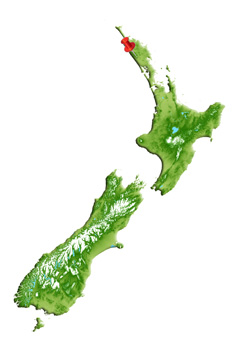Pupu Rangi Nature Sanctuary
 The Pupu Rangi Nature Sanctuary is a not for profit organization dedicated to the protection of Northland’s native flora and fauna. Our goal is to protect and extend a vibrant ecosystem while educating others on the importance of conservation. We view ourselves as partners with our volunteers, community, and the environment.
The Pupu Rangi Nature Sanctuary is a not for profit organization dedicated to the protection of Northland’s native flora and fauna. Our goal is to protect and extend a vibrant ecosystem while educating others on the importance of conservation. We view ourselves as partners with our volunteers, community, and the environment.
Vision
Establish an area that will support a population of ten pairs of Northland brown kiwi.
Location
Kaihu, Northland; in the vicinity of the Trounson Kauri Park.
Area
100 hectares.
Organisations involved
Northland Regional Council, Trounson Kauri Park, Casa Lumaca Ltd.
Management history
The current conservation area was cleared for farming in the 19th century but has been left to regenerate for the past 100 years. The forest can be broken up into two parts, with an older cut-over podocarp/broadleaf forest in the higher altitude southern end. This section is dissected by a stream and the areas around the stream gully have retained some original old-growth forest elements, including some very old emergent Pukatea and Northern Rata. There is a high diversity of plant species here, including ferns, filmy ferns, mosses as well as shrubs and sub-canopy plants typical of rainforests of the area. The canopy is dominated by towai, with tawa, taraire and makamaka common.Because of this disturbance to the canopy, and also the high rainfall of the area, there is a profusion of vines in the ground layer and sub-canopy, namely supplejack and keikei. This forest could be referred to as cloud forest, and would typically have high amounts of rain at all times of the year.
This forest grades into a flatter younger forest at the northern end, which appears to be regenerating from land clearances/pasture development over the past century. This characterized by an even aged cohort of kahikatea and towai, flanked by fernlands dominated by wheki. Whilst there is less plant diversity here than in the upper section, there are species more typical of lower altitude present, such as nikau palm.
Over the last three years a number of trails have been cut to provide access for the set-up of bait stations. Over the next couple of years the trail cutting will continue in parallel with the pest control activities that target rats and possums.
The sanctuary operates with the help of volunteers.Access
While still in the establishment phase, the nature sanctuary is closed to the public apart from pre-booked activities (see www.pupurangi.com for details).
